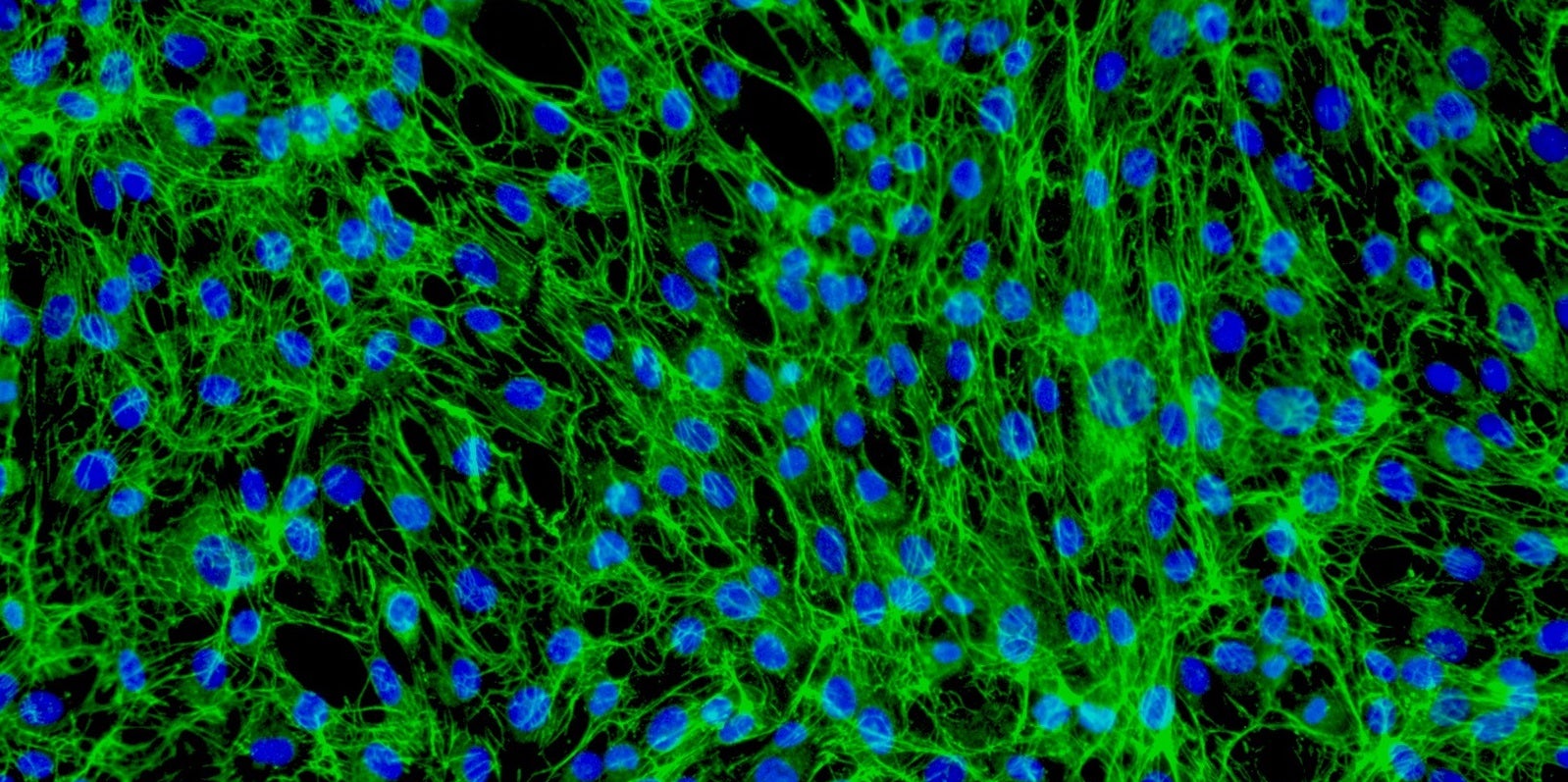Aug 9: Novel molecular regulatory mechanism identified that underlies psoriasis pathogenesis
Aug 9: Novel molecular regulatory mechanism identified that underlies psoriasis pathogenesis

Fibroblasts in the skin of psoriasis patients produce multiple cytokines that are responsible for the chemo-attraction of immune cells into the dermis and the hyperplasia of the epidermis, two of the key characteristics of psoriasis. The process appears to be regulated by ZFP36 family members (these are RNA-binding proteins with mRNA-degrading properties), according to research by UMC Utrecht.
Dermal fibroblasts are strategically positioned underneath the basal epidermis layer to support keratinocyte proliferation and extracellular matrix production. In inflammatory conditions, these fibroblasts produce cytokines and chemokines that promote the chemo-attraction of immune cells into the dermis and the hyperplasia of the epidermis, two characteristic hallmarks of Psoriasis. However, how dermal fibroblasts specifically contribute to the development of psoriasis remains largely uncharacterized. Therefore, researchers from UMC Utrecht investigated through which cytokines and signaling pathways dermal fibroblasts contribute to the inflammatory features of psoriatic skin.
Dermal fibroblasts
In an experimental study published now in the Journal of Investigative Dermatology, the investigators demonstrated that dermal fibroblasts from lesional psoriasis skin are important producers of inflammatory mediators, including cytokines IL6, CXCL8 and CXCL2. This increased cytokine production was found to be regulated by ZFP36 family members ZFP36, ZFP36L1 and ZPF36L2, all RNA-binding proteins with mRNA-degrading properties. Additionally, the expression of ZFP36 family proteins was found reduced in chronic inflammatory conditions that mimic psoriatic skin lesions.
Senior investigator Jorg van Loosdregt, PhD (Center for Translational Immunology, UMC Utrecht) summarizes the findings: “Collectively, these results indicate that dermal fibroblasts are important producers of cytokines in psoriatic skin, and that reduced expression of ZFP36 members in psoriasis dermal fibroblasts contributes to their inflammatory phenotype. These data provide insight into the pathogenesis of psoriasis and may provide therapeutic opportunities in the future.”

First author Chiara Angiolilli, co-author Bas Vastert and last author Jorg van Loosdregt
Psoriasis
Psoriasis is a common chronic inflammatory skin disease which affects 1-3 percent of the population. The characteristic feature of established psoriasis is the presence of scaly and persistent skin lesions (primarily on elbows, knees, scalp and lower back) which result from the abnormal activation and differentiation of keratinocytes in the epidermis. Such epidermal changes are the consequence of chronic inflammatory events in the underlying dermal compartment, which involve the infiltration of mononuclear cells and the instauration of a positive inflammatory feedback-loop in the skin. Psoriasis can start at any age, but most often develops in adults under 35 years old, and affects men and women equally.
Publication
Angiolilli C, Leijten EFA, Bekker CPJ, Eeftink E, Giovannone B, Olde Nordkamp M, van der Wal M, Thijs JL, Vastert SJ, van Wijk F, Radstake TRDJ, van Loosdregt J. ZFP36 family members regulate the pro-inflammatory features of psoriatic dermal fibroblasts. Journal of Investigative Dermatology, 2021 in press.

